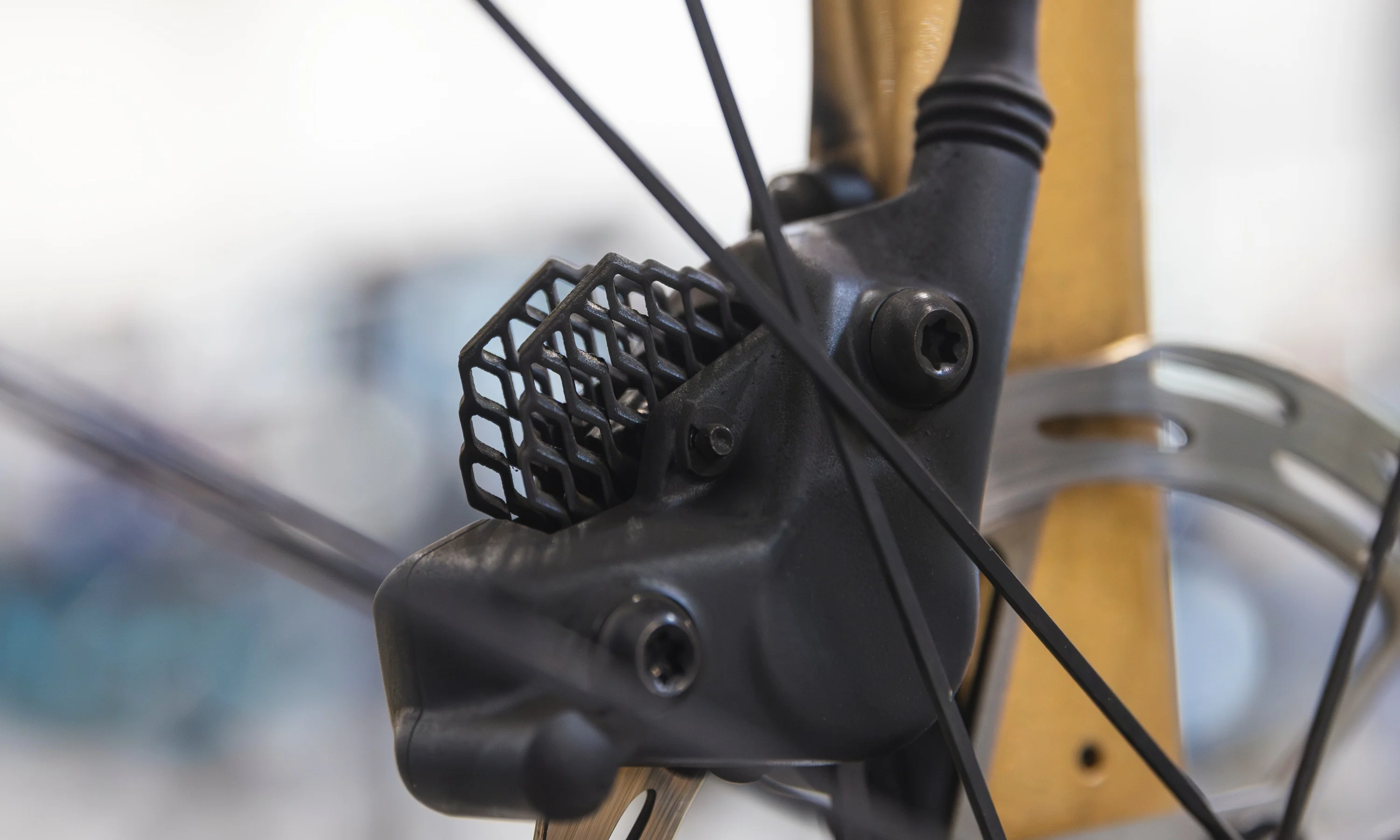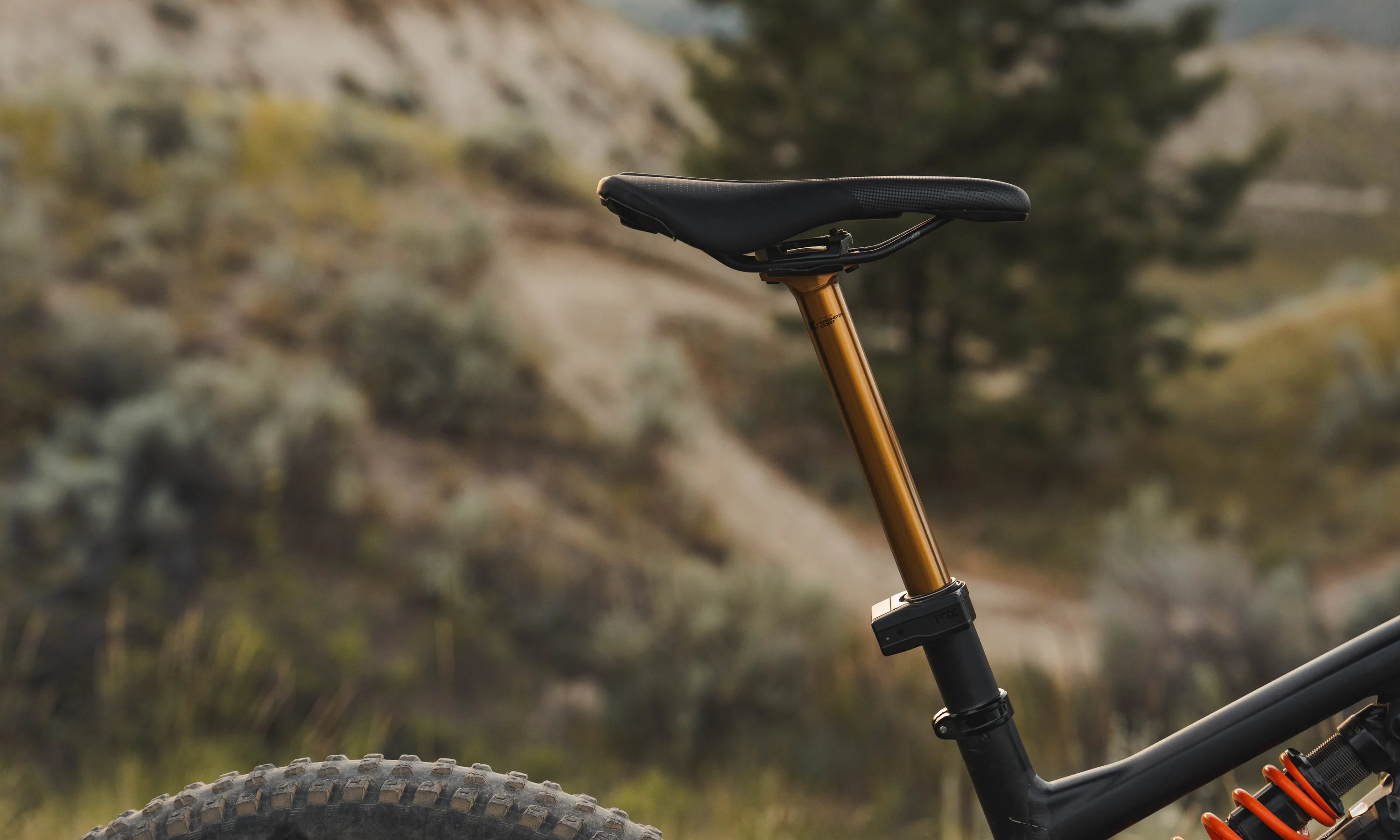In the past few months, some of the basic parts required to keep your bike shifting and stopping have become almost unobtanium. Friends who I haven't heard from in years have reached out wondering if I might have a secret chain stash or a brake pad cache which I buried for just such a rainy day. Sadly, dear reader, although I have an admirable collection of 140mm stems, I did not have the foresight to buy the dip on chains and pads.
So, just like the rest of us, I am scrambling to buy brake pads online, and trying not to ride my gravel bike in the wet until my local bike shop restocks on the L03A Shimano pads which seem about as rare as hen’s teeth these days.
 James's preferred Shimano L03A pads have been hard to come by.
James's preferred Shimano L03A pads have been hard to come by.
Thankfully, it turns out there are other options in the brake pad market, and knowing about them is a benefit even in times of plenty. But right now, with brake pads hard to come by, knowing what your options are is more important than ever. No matter what brand your brakes are, you’ll want to evaluate which pad material, backer, and manufacturer are right for you and your budget. Here’s how to evaluate those features.
Understanding what brake pads you want is easier if you understand what brake pads do. Their job is to turn potential energy into heat using friction. A good brake pad has to shed that heat so it can keep up your braking performance (i.e., friction) even on a long downhill where braking generates a lot of heat. That’s why you see features like “cooling fins” touted by pad manufacturers and cooling technologies built into modern rotors. (More on that later.) The amount of heat you generate will be determined by your weight, speed, and how much you tend to drag the brakes on long descents.
[button]Shop all brakes[/button]
Sintered vs. organic pad material
 Sintered (left) vs. organic SRAM road disc brake pads.
Sintered (left) vs. organic SRAM road disc brake pads.
When choosing a pad, the major choice is between sintered or metallic pads and organic or resin pads. Organic pads contain fibers such as rubber, glass, and carbon (get it, “organic?”), plus fillers which are fused by heat-resistant resins to keep everything together. Sintered pads are made by compressing powder (normally at least in part metallic powder) into the shape of a pad.
Each pad material offers positive and negative attributes. Perhaps the most important consideration is that it is generally best practice to keep one set of rotors for each pad material. So if you’re currently using organic pads, and want to switch to metallic pads, you’ll need new rotors as well. Metallic pads also don’t work with some cheaper rotors, so be sure to check that your rotors don’t have “resin pads only” stamped on them before you go out and buy metallic pads.
[product-block handle="sram-disc-brake-pad-set-organic-with-aluminum-back-fits-hydraulic-road-disc"/]
The pads your bike came with, and probably the ones you normally use, are organic pads. These offer more modulation, lower price, and have a feel more similar to the rubber rim brake pads. They also tend to be quieter, although they are still more than capable of howling like a banshee if contaminated with oil. They can wear faster than metallic pads, and might be more likely to decrease in performance on long descents with a lot of braking.
Traditionally, metallic pads (Shimano L04c or SRAM part numbers will depend on which generation of calipers you use) have been reserved for off-road riding, especially on downhill bikes. They dissipate heat better than organic pads, meaning they are less likely to fade on longer and faster downhills. They also last longer in wet sloppy conditions, which can destroy organic pads in a single ride. Although metallic pads might make a “grinding” noise, they are actually more resistant to contamination, reducing the chance of the screech that most riders will associate with oily pads.
[product-block handle="sram-disc-brake-pad-set-sintered-with-steel-back-fits-hydraulic-road-disc-level"/]
However, metallic pads can take a while to bed in, and don’t offer the same modulation that organic pads do.
 Semi-metallic SwissStop EXOTherm2 pads.
Semi-metallic SwissStop EXOTherm2 pads.
These days, many manufacturers offer a hybrid semi-metallic pad which costs a little more but delivers performance similar to organic pads with longer life. SwissStop’s EXOTherm 2 is one example. SwissStop claim these pads offer modulation similar to an organic pad but about three times the lifespan.
[newsletter]
Steel vs. aluminum backing material
 Steel (left) vs. aluminum backed SRAM road disc brake pads.
Steel (left) vs. aluminum backed SRAM road disc brake pads.
The second factor to consider is backing material, although in general, you should let your choice of pad material narrow this choice down for you. The common backing material options are steel, aluminum, or titanium.
 Titanium-backed Shimano G04Ti pads.
Titanium-backed Shimano G04Ti pads.
Shimano, for instance, uses titanium to back XTR pads and aftermarket pad brand SwissStop offers both alloy and steel-backed pads with the former offering a small weight saving and claiming to dissipate heat better. The differences between backing materials are marginal compared to those between pad compounds, so your major consideration here will be how much you want to spend to save a few grams.
Cooling fins
 The Shimano H03C pads used on Saint downhill brakes feature large cooling fins.
The Shimano H03C pads used on Saint downhill brakes feature large cooling fins.
Most modern pads will also come in a finned and un-finned version. The fins use airflow to move heat away from the pad surface. Although Shimano pioneered the technology with their IceTech pads, most brands offer finned pads now. If you want fins on SRAM brakes, you’ll need to buy them from an aftermarket brand like SwissStop.
If you can get the finned pads, you might as well. They might have a tiny weight penalty, but the performance on long descents is improved, especially for larger riders or more cautious descenders. If you ride in a flat area, you likely won’t notice much difference on short downhills.
Brand
Finally, you will want to decide what brand of pads you want. I would suggest sticking to trusted brands, such as Shimano, SRAM, Magura, Hayes, Hope, and Campagnolo. However, aftermarket brands like SwissStop also make excellent pads, and in some cases last longer than stock pads justifying their cost.
If you’re looking to find a specific combination of pad, backing material, and fin, or simply can’t find other pads in stock, aftermarket pads are an excellent choice. That said, I would avoid random Amazon or eBay pads with a name you have not heard of. I’ve seen these pads so far out of spec they won’t even fit into the caliper. I shouldn’t have to tell you that brakes are one of the more important safety features on your bike.
When to replace bike disc brake pads
Over time, all pads wear down. They wear especially fast when there is something adding to the friction, like mud or grit on the rotor. Generally, you can tell if a pad is worn by taking it out and looking at it. If the pad material is worn down thinner than 1.5mm or you can see the metal backer (stop riding right away… they’ve worn too far!), it’s time for new pads. Leaving this too long can result in a catastrophic loss of braking power, and damage your rotors. Make sure to check your pads often (I do it every time I charge my di2 or change my wheels).
How to bed in bike disc brake pads
Whichever pads you buy, make sure to bed them in properly. This process dramatically increases performance and longevity. If you haven’t bedded in pads before, the process is relatively simple. What you are trying to do is embed pad material all around the rotor, which helps generate friction. Find a clean area — you don’t want to embed dirt into your rotor. Roll up to a jogging speed and apply even pressure to the brakes, don’t lock up the wheel. Don’t come to a complete stop.
If you want to get fancy, SwissStop suggests this more involved process. Once you’re all bedded in, make sure to keep oil, grease, and any other liquid off your pads. With your pads selected, installed, and bedded in, you’re ready to enjoy the consistent and powerful braking that disc brakes provide.
Conclusion
 So which replacement pads should you pick? The answer to this depends on you and your riding. First, you want to make sure the pads fit your calipers. Shimano, SRAM, and SwissStop all offer handy charts or tools for this. If you’re a bigger rider who likes to drag their brakes and you notice brake fade on mountain descents, metallic finned pads (and perhaps larger rotors) are the way to go. If you’re a crit racer and want reliable braking into corners, organic pads are the best choice.
So which replacement pads should you pick? The answer to this depends on you and your riding. First, you want to make sure the pads fit your calipers. Shimano, SRAM, and SwissStop all offer handy charts or tools for this. If you’re a bigger rider who likes to drag their brakes and you notice brake fade on mountain descents, metallic finned pads (and perhaps larger rotors) are the way to go. If you’re a crit racer and want reliable braking into corners, organic pads are the best choice.
You don’t have to use the same pads on each wheel either, although this might take some getting used to. Some mountain bikers run a metallic pad in the rear, where the pads tend to get dirtier and where longevity is more important than performance, and then use an organic or semi-metallic pad up front for performance. Personally, I run organic pads on my road bike and metallic pads on my gravel or bikepacking bike where wear is more of a concern. I also carry a spare set of pads in my saddlebag, because I once burned through a set of pads at night in Rwanda, a very long way from a bike shop. I genuinely thought I might die. I never want to see sparks coming off my rotor again, and I am more than willing to pay the slight weight penalty for hauling around a set of pads in a zip lock bag!
[button]Shop all brakes[/button]

























